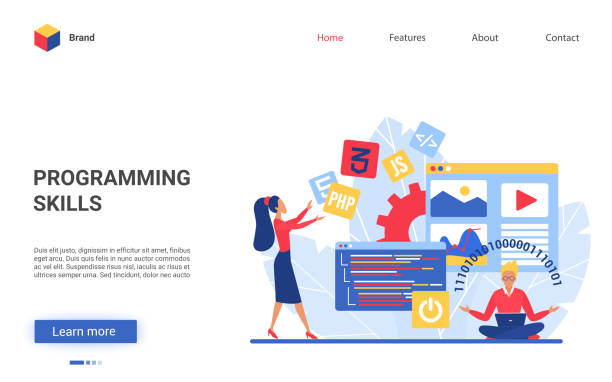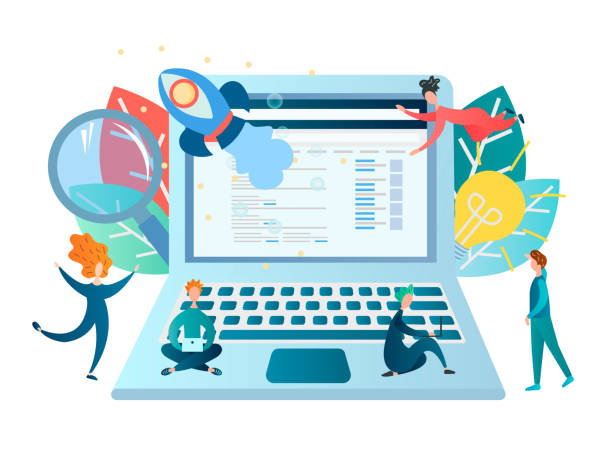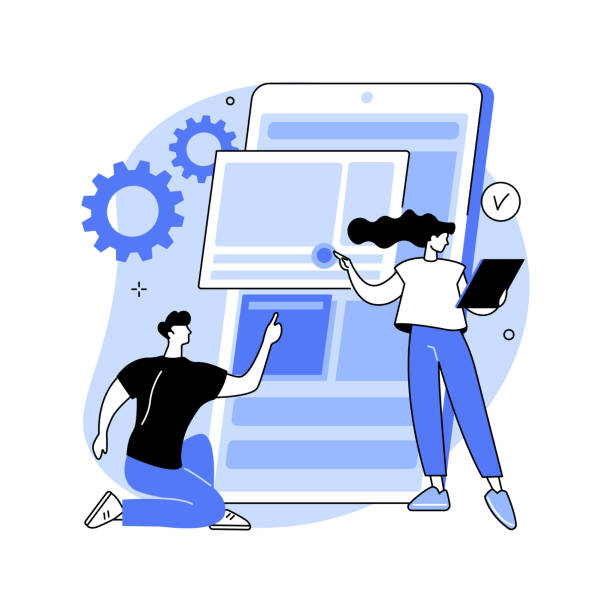The Importance of Multilingual Website Design in Today’s World
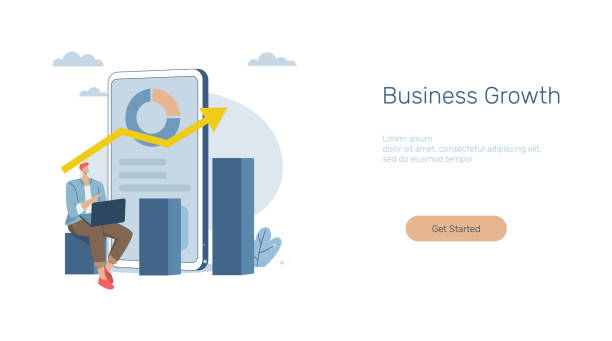
In the era of globalization, communication with audiences has gone beyond geographical and cultural boundaries.
Multilingual website design is no longer a luxury option, but a necessity for any business or organization that intends to expand and interact with global markets.
Single-language websites cover only a small portion of the global audience potential, while a #multilingual_website can open a door to customers, partners, and users worldwide.
This approach not only demonstrates respect for cultural diversity but also significantly contributes to increasing #accessibility and #brand_credibility.
The main goal of #creating_a_multilingual_website is to provide a seamless and comfortable user experience for visitors whose native language is not Persian.
This requires accurate translation and localized content that goes beyond word-for-word translation, encompassing an understanding of cultural differences, idiomatic expressions, and even date and number formats.
The importance of this issue is such that many leading companies worldwide have invested significantly in fully localizing their platforms.
Have you ever wondered how a multilingual website can increase your organic traffic from search engines worldwide? This is a thought-provoking question whose answer lies in SEO optimization for each language.
Internationalization and localization not only means translating text but also includes adapting design, user interface, and even marketing strategies for each geographical region.
This is a fundamental guide for anyone who wants to compete in the global market.
This educational section helps you gain a comprehensive understanding of the importance of being multilingual.
Disappointed with your e-commerce site’s low conversion rate? Rasawab transforms your e-commerce site into a powerful tool for attracting and converting customers!
✅ Significant increase in visitor-to-buyer conversion rate
✅ Unparalleled user experience to boost customer satisfaction and loyalty⚡ Get a free consultation from Rasawab!
Key Advantages of Multilingual Website Design

Multilingual website design directly helps increase audience reach.
When your website is available in different languages, you not only attract more visitors from around the world but also provide a better user experience for them.
This, in turn, leads to a lower bounce rate and an increased duration of user presence on the site.
One of the biggest advantages of having a multilingual site is improved international SEO.
Search engines like Google prefer websites with high-quality and localized content.
By creating different versions for each language and correctly using hreflang tags, you can ensure that search engines display the correct version of your website to users in different regions.
This is a deep analysis of how search algorithms work in a multilingual environment.
Furthermore, a multilingual site helps strengthen credibility and branding.
A company that invests in providing a multilingual user experience positions itself as a global and customer-centric entity.
This demonstrates respect for different cultures and languages and can attract the trust of international customers.
It also opens up new business opportunities.
By entering new markets through localized content, you can offer your products and services to customers who previously could not access them due to language barriers.
This is a complete explanation of all the positive aspects of multilingual website design that helps grow your business and clarifies its strategies.
Challenges in Implementing a Multilingual Website

Implementing a multilingual website design is not without its challenges and requires careful planning and principled execution.
One of the most significant challenges is content and translation management.
Ensuring the accuracy, quality, and up-to-dateness of translations across all languages can be very complex and time-consuming.
Machine translation alone is not sufficient and often requires review by native and expert translators to maintain cultural and semantic accuracy.
Furthermore, coordination between content teams and translators to ensure simultaneous and consistent content publication across all language versions is a significant operational challenge.
Another challenge relates to search engine optimization (SEO) for each language.
Keywords, search phrases, and even user search behavior may vary across different languages and cultures.
Therefore, the SEO strategy should be developed individually for each language, taking into account localization differences.
Technical issues such as choosing the appropriate URL structure (subdomain, subdirectory, or separate domain), correct use of hreflang tags, and ensuring website loading speed in different regions are also among the technical challenges.
Data security and privacy in each geographical region must also be considered, as privacy laws (such as GDPR in Europe) may differ for each region.
This is a specialized section that deals with technical and management details.
| Aspect | Main Challenge | Initial Solution |
|---|---|---|
| Content Management | Quality and updating of translations | Use of Translation Management Systems (TMS) |
| International SEO | Different keywords, regional regulations | Keyword research for each language, hreflang tag |
| Technical | URL structure, loading speed | Choosing suitable hosting, CDN, logical URL structure |
Google’s guide for multilingual sites can be a useful resource for solving technical challenges.
This is an explanation for a deeper understanding of the existing problems.
Choosing the Best Strategy for Building a Multilingual Website

For success in multilingual website design, choosing the right strategy is of paramount importance.
There are three main approaches to structuring a multilingual website: using country code top-level domains (ccTLDs) (e.g., .de for Germany, .fr for France), using subdomains (e.g., fr.example.com), or using subdirectories (e.g., example.com/fr/).
Each of these approaches has its own advantages and disadvantages in terms of SEO, management, and cost.
Country ccTLDs usually offer the best regional SEO performance but are more expensive and complex to manage.
Subdirectories are easier to manage and are often seen by search engines as part of a single domain, which can be beneficial for overall SEO.
In addition to URL structure, deciding on how to translate content is also crucial.
Do you use professional translators? Do you utilize a combination of machine translation and human editing? Or do you use specialized translation management platforms? The correct selection of tools and processes for building a multilingual website depends on the final content quality and the operational efficiency of your project.
You should also consider a Content Management System (CMS) that fully supports multilingual capabilities.
Some CMSs, such as WordPress with plugins like WPML or Polylang, or Drupal and Joomla, offer powerful options for managing multilingual content.
This is a comprehensive guide for choosing the best approach, presented expertly.
Is your e-commerce site ready to attract maximum customers and increase sales? Rasawab revolutionizes your online business with modern and efficient e-commerce website design.
✅ Increased speed and improved SEO
✅ Excellent user experience on mobile and desktop⚡ Get a free e-commerce website design consultation from Rasawab!
Localization Beyond Mere Translation

Multilingual website design is not just about word-for-word translation; rather, it encompasses a deeper concept called Localization.
Localization involves completely adapting content, design, and user experience to the culture, norms, laws, and even purchasing habits of the audience in a specific region.
This includes items such as currency, date and time formats, addresses, phone numbers, colors, images, and even the tone of writing.
For example, a color that has a positive meaning in one culture may carry a negative connotation in another.
Images and symbols must also be carefully chosen to convey the correct message and avoid misunderstandings.
For a successful multilingual website, you need to conduct in-depth research on the target audience in each country.
This research should include an examination of user preferences, online purchasing behavior, and even local laws related to e-commerce and privacy.
This is a complex and specialized process that requires collaboration among translators, marketers, and web designers.
The ultimate goal of localization is for the visitor to feel that the website has been specifically designed for them, their language, and their culture, rather than simply being a translated version.
This helps increase trust, engagement, and ultimately, conversion rates.
This section provides a deep explanation of the cultural and psychological aspects of localization.
The Role of SEO in Multilingual and International Website Design

SEO (Search Engine Optimization) is of vital importance in the process of multilingual website design.
Without a proper international SEO strategy, even if your website is translated into multiple languages, it may not be found by local users.
The first step in multilingual SEO is keyword research for each language.
Keywords that are effective in one language may not be suitable or may have a different meaning in another language.
Therefore, you should use keyword research tools and prepare a list of localized keywords for each language version.
Correct use of hreflang tags is one of the most important technical aspects of multilingual SEO.
These tags inform search engines that different versions of a page exist for various languages or regions, helping them display the correct version to users.
Furthermore, website loading speed, responsiveness (responsive design), and image optimization for each language are also important.
The URL structure, as mentioned earlier, also impacts SEO.
A multilingual website should be optimized in such a way that it is understandable and accessible to both users and search engine bots.
This specialized process requires technical knowledge and a deep understanding of different markets and cultures.
This is a complete explanation of SEO aspects.
Helpful Tools and Platforms in Multilingual Design

Implementing a multilingual website design can be significantly easier with the right tools and platforms.
Content Management Systems (CMS) play a key role in this area.
WordPress, with powerful plugins like WPML and Polylang, is one of the most popular options for building multilingual websites.
These plugins enable the translation of posts, pages, categories, and even theme and plugin strings.
Drupal and Joomla also natively support multilingual capabilities and are suitable options for larger and more complex projects.
In addition to CMSs, Translation Management Systems (TMS) also play an important role in organizing the translation process.
These systems help you centrally manage your website content, assign it to translators, and track translation progress.
Tools like Transifex, PhraseApp, and Smartling are examples of these TMSs that streamline the translation workflow.
For multilingual SEO, tools like Google Search Console for checking hreflang tag status and Google Analytics for analyzing user behavior across different language versions are essential.
The correct selection and combination of these tools for building a multilingual website will increase your team’s productivity and ensure the final product’s quality.
This is an educational and specialized section.
| Tool Category | Examples | Application |
|---|---|---|
| Multilingual CMS | WordPress (with WPML/Polylang plugin), Drupal, Joomla | Multilingual content management and publishing |
| Translation Management System (TMS) | Transifex, PhraseApp, Smartling | Organization and automation of the translation process |
| SEO Tools | Google Search Console, Google Analytics, Ahrefs | Traffic analysis, keyword optimization, and performance tracking |
For more information about WPML, you can refer to the official WPML website.
Testing and Maintenance of Multilingual Websites
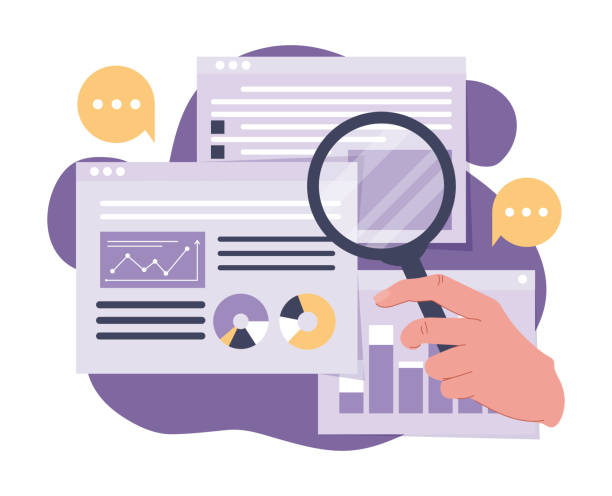
After completing multilingual website design and implementation, the testing and maintenance phase is of particular importance.
Comprehensive testing should include a detailed review of translations for accuracy, grammar, spelling, and cultural appropriateness.
Also, it must be ensured that all links, forms, images, and user interface elements function correctly across all language versions.
Performance testing across different browsers and devices (mobile, tablet, desktop) is also essential to provide a consistent user experience.
SEO testing, including checking hreflang tags, canonicals, and URL structure, is crucial to ensure proper crawling by search engines.
This is an explanatory and specialized stage in the website’s lifecycle.
Maintaining a multilingual website is an ongoing process.
Content must be regularly updated, and translations should also be synchronized with any new changes.
Monitoring SEO performance in each language, using tools like Google Analytics and Google Search Console, helps you identify and resolve potential issues.
Additionally, you should continuously collect user feedback and implement necessary improvements.
This includes updating privacy policies and ensuring compliance with local regulations.
A dynamic and up-to-date multilingual site can continuously attract new visitors and enhance your brand’s international credibility.
Don’t have a corporate website yet and missing out on online opportunities? With professional corporate website design by Rasawab,
✅ Double your business credibility
✅ Attract new customers
⚡ Free consultation for your corporate website!
Successful Case Study of Multilingual Website Design

To better understand the importance and potential of multilingual website design, one can look at successful global examples.
Companies like Airbnb, Spotify, and HubSpot are prominent examples of platforms that, by offering their services in dozens of different languages, have managed to penetrate global markets and become giants in their respective industries.
Airbnb, by fully localizing the user experience, has not only translated its website and app’s language but also gained the trust of international users by providing customer support in various languages and adapting payment methods to local currencies.
This is an analytical review of successful strategies.
Spotify also provides a personalized experience for users worldwide by offering localized content, including local playlists and podcasts, as well as a multilingual user interface.
This approach has not only helped increase the number of users but also contributed to their retention and loyalty.
HubSpot, as a marketing, sales, and customer service platform, has become a globally recognized authority and attracted many customers from non-English-speaking markets by providing educational content (blogs, videos, online courses) in multiple languages.
These examples demonstrate how a multilingual website can be a growth engine for a business and how educational and specialized content can be shared globally.
This is good and inspiring news for businesses looking to go global.
The Future of Web Design and Multilingualism

The future of web design is moving towards more personalization and global accessibility, and multilingual website design will play a pivotal role in this path.
With advancements in AI and machine learning technologies, translation and localization processes are expected to become increasingly automated and accurate.
This does not mean that the need for human translators will disappear; rather, their roles will shift towards editing, quality control, and deeper content localization.
Furthermore, the emergence of technologies such as virtual reality and augmented reality and the metaverse provides new opportunities for creating multilingual and multicultural experiences.
In the future, multilingual websites will increasingly become interactive and dynamic platforms capable of automatically adapting content based on the user’s language, location, and even cultural preferences.
This approach elevates the user experience to an unprecedented level of personalization.
The focus on privacy and data security on a global scale will also gain more importance, as laws and regulations become more complex worldwide.
Ultimately, businesses that invest in multilingual website design and localization now are taking a significant step towards ensuring their success and sustainable growth in the global market.
This is an engaging and analytical content about trends and future outlook.
Frequently Asked Questions
| Question | Answer |
|---|---|
| What is multilingual website design? | The process of building a website whose content is available to users in more than one language. |
| Why should we make our site multilingual? | To reach a broader global audience, improve user experience for non-native speakers, and increase sales or engagement. |
| What are the methods for implementing a multilingual site? | Using subdomains, subdirectories, or URL parameters, or using different top-level domains (TLDs) for each language. |
| Which method is better for SEO? | Generally, using subdirectories (e.g., example.com/fa/) is recommended for SEO because they share the main domain’s authority. |
| What is the hreflang tag and what is its use? | The hreflang tag is an HTML attribute that helps search engines understand which version of a page is suitable for a specific language or region. |
| Is machine translation sufficient for multilingual website content? | Usually no. For a good user experience and maintaining credibility, professional translation and content localization are essential. |
| What does Localization mean? | The process of adapting content, design, and site functionality to the culture, language, currency, and other specific characteristics of a target region or country. |
| What is the importance of language selection in multilingual website design? | Users should be allowed to easily select their desired language, usually via a clear button or menu in the site’s header. |
| What challenges exist in multilingual website design? | Managing content in different languages, maintaining consistency in design and user experience, multilingual SEO, and translation and maintenance costs. |
| What features should a suitable Content Management System (CMS) for a multilingual site have? | It should allow easy management of content in different languages, support multilingual URL structures, and have relevant translation and localization plugins. |
And other services of Rasa Web Advertising Agency in the field of advertising:
Smart Content Strategy: A new service for increasing user engagement through the use of real data.
Smart Direct Marketing: Designed for businesses seeking digital branding through optimizing key pages.
Smart Marketplace: A professional solution for customer acquisition with a focus on precise audience targeting.
Smart Digital Branding: A new service for increasing user engagement through the use of real data.
Smart SEO: A dedicated service for improving SEO rankings based on intelligent data analysis.
And over a hundred other services in the field of internet advertising, advertising consultation, and organizational solutions.
Internet Advertising | Advertising Strategy | Advertorial
Resources
Multilingual SEO Guide
Advantages of a Multilingual Site
WordPress Multilingual Setup
International Website Design
? To shine in the online space, you need a reliable partner. Rasawab Afarin, a leading digital marketing agency, paves your path to digital success by offering comprehensive services including SEO, smart advertising, and personal website design. Contact us today and transform the future of your business!
📍 Tehran, Mirdamad Street, next to Bank Markazi, Southern Kazeroon Alley, Ramin Alley, No. 6

